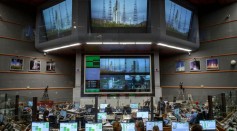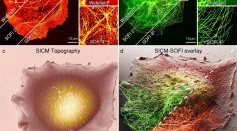imaging

Ghost Imaging System Combined With Human Vision Allows Seeing Through Objects Behind Walls

Researchers Discovers a New Technique Using Magnetic Fields to Align Gold Nanorods for Better Imaging Performance

OpenAI Text-to-Image Generator 'DALL-E 2' Now Edits and Combines Existing Pictures

James Webb Space Telescope Antenna Assembly Expected to Relay Clear Imaging, Ground Control Data

Novel Approach on Imaging by Combining Two Distinct Microscopy Technology Cells Show How Cells Work
MIT Engineers Devise Cost-Effective Method For Imaging Viruses
A Unique Tool for Live-Cell Imaging
A New Microscopy System for Imaging Cells from Inside
How the Neurons of A Sea Slug Could Change Neurobiology Forever
Not Just NASA ‘Ducks & Covers’—Comet Siding Spring
ESA Rosetta Spacecraft Is Showing Off Its ‘Cheops’
Most Popular

What’s Inside the Moon? Lunar Seismic Data Reveals Earth-Like Core

Plato’s Long-Lost Grave Found Using AI To Decipher Herculaneum Scrolls; Greek Philosopher Had Been Sold Into Slavery: Report

Most Credible UFO Encounter: Man’s Glove Melted and He Suffered From Burns After Alleged Encounter in Falcon Lake Woods

UFOs Piloted by Spiritual Entities? Fox News' Tucker Carlson Makes Bizarre Claim, Suggests That They Do Not Behave According to Laws of Science





